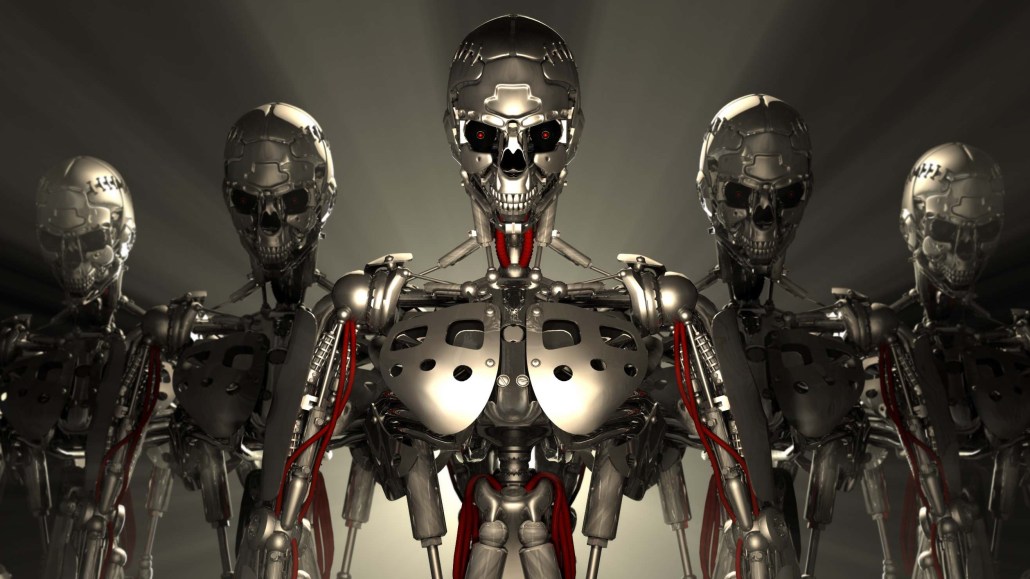Connect with execs from The New York Times, TIME, Dotdash Meredith and many more

The ad tech world recoils at the notion that the move to automated ad systems means replacing humans with robots. But that prospect doesn’t mean there won’t be some bare-knuckles competition.
A sign of things to come is unfolding in the Netherlands, where the largest Dutch morning newspaper De Telegraaf makes its salespeople compete directly with programmatic channels, and it factors things like salaries and other overheads into its ad decisions. This is yield management taken to the extreme. If the paper can make more money selling ads through exchanges or other programmatic deals for a $4 CPM than it does from direct deals for $8, it’ll do that instead. As the philosopher Rasheed Wallace might put it: Data don’t lie.
“Publishers, especially news publishers, need to reduce their cost of sales if they want to be relevant in the next decade,” explained De Telegraaf’s head of revenue development, Martin van der Meij. “It’s a matter of surviving.”
The fact is, technology will always be faster and more efficient than people – just ask John Henry – and that means people will always be expensive by comparison. Direct sales forces might be good at selling high-ticket items, but publishers have to pay them hundreds of thousands of dollars a year to do so. Automated technology, on the other hand, might sell ads for less, but it can do it at a fraction of the cost.
This more Darwinian view is a variation on the rising-tide-lifts-all-boats perspective often presented. It is also a somewhat different approach to the “barbell” strategy now being adopted by many publishers, with which direct, “premium” sales efforts are separated from programmatic ones. At De Telegraaf, all ad opportunities are optimized the same way– based on how much net revenue they generate for the publisher’s bottom line. It’s a numbers game, essentially, and whatever channel achieves the highest margin wins.
But according to van der Meij, pitting the company’s direct sales team against programmatic channels has forced it to raise its game. When sales staffers realized they couldn’t win on price alone, they began to put together better campaigns, he said.
Unfortunately, that won’t save all of them. “We’re trying to automate as much as we possibly can, and that means sales teams will get smaller,” he said. “If you’re selling stuff that can be automated, your job will eventually be obsolete. Everything that’s standardized will be traded automatically someday.”
Rubicon Project founder Frank Addante thinks more publishers should, and will, move in the same direction as De Telegraaf. “A direct sales force is the most expensive channel to take a product to market,” he argues.
Rather than overprotecting direct sales forces, publishers should be more open to selling through automated channels and take advantage of efficiencies and cost savings as a result, Addante said. Given that his company helps facilitate automated ad trading, that view might be taken with a pinch of salt.
It’s worth noting that De Telegraaf is in a different position than many U.S. publishers, however. It operates in a drastically smaller market than national papers in America, which makes the efficiencies of programmatic trading even more appealing. The cost of dealing with an insertion order remains fairly consistent for publishers regardless of the size of the order. As a result, that overhead is less of a concern for U.S. publishers dealing with insertion orders worth hundreds of thousands of dollars than those in the Netherlands. It’s a benefit of scale.
As a result, it’ll probably be a couple of years until that type of model is adopted by American publishers, but van der Meij believes it’s inevitable they will. The technology is here to stay, and like it or not, publishers will have to make a way to make it work for their businesses, he said. Programmatic buying won’t always be about shifting remnant inventory.
“Bigger markets will follow a little later,” van der Meij concluded. “But to me it makes sense for publishers to optimize for profits.”
Image via Flickr
More in Media

Retail media meets publishing: News UK, Future and Ocado tap clean room tech for smarter data targeting
News UK, The Independent, Immediate Media and Future are teaming up with retail media network Ocado to test clean room-powered data matching.

From sidelines to spotlight: Esports events are putting creators center stage
Esports events’ embrace of content creators reflects advertisers’ changing priorities across both gaming and the wider culture. In the past, marketers viewed esports as one of the best ways to reach gamers. In 2025, brands are instead prioritizing creators in their outreach to audiences across demographics and interest areas, including gaming.

Condé Nast and Hearst strike Amazon AI licensing deals for Rufus
Condé Nast and Hearst have joined the New York Times in signing a licensing deal with Amazon for its AI-powered shopping assistant Rufus.





